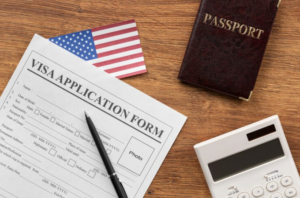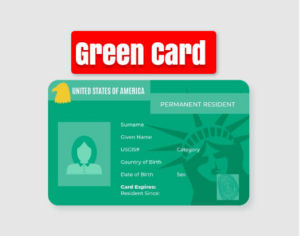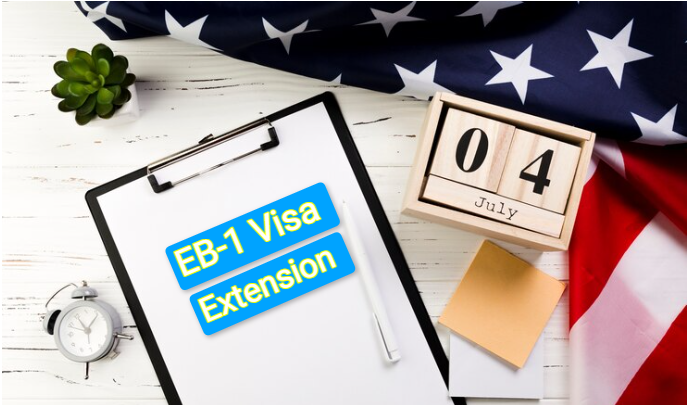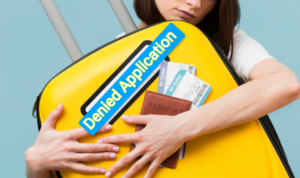The EB-1 visa is a distinguished employment-based visa category granted to individuals with exceptional talents, outstanding academic or professional achievements, or multinational executives and managers. If you want to keep living and working in the United States while carrying an EB-1 visa, you might have to seek an extension to keep your legal status.
This comprehensive guide will provide you with all you need to know about the EB-1 visa extension procedure, including eligibility, periods, documents, forms, and useful guidance.
Understanding the EB-1 Visa
The EB-1 is a first-preference visa category designed for highly talented individuals. Many times, it is regarded as an initial step toward green card status or permanent residency. Like other visa types, however, it includes expiration dates that require requesting extensions if you have not yet transitioned to permanent residence.
When and Why to Apply for an EB-1 Visa Extension
Under the following circumstances, you might require an EB-1 visa extension:
- Pending Adjustment of Status: If your green card application is denied and your EB-1 status is going to expire.
- Employment Continuation: To maintain legal work in the United States without interruption.
Timing Your Application
Applying for an extension before your current EB-1 visa expires is vital. Applications can be submitted up to 90 days before the deadline. Late filing could compromise your U.S. legal status.
Eligibility for an EB-1 Visa Extension
To qualify for an EB-1 visa extension, you must:
- Hold a valid EB-1 visa at the time of filing to be eligible for an extension.
- Comply with the terms of your visa.
- Have a valid reason for staying (e.g., ongoing employment, awaiting status change).
- Provide proof of your remarkable skills or employment as required.
Step-by-Step Guide for EB-1 Visa Extension
Step 1: Gather Required Documents

Verify you have all the required paperwork before starting your extension application. Denials or delays might result from missing documentation.
Important Documents Required
- Evidence of Current Status:
o Passport
o Current Visa
o I-94 form, for extension and renewal
- Form I-797C Receipt Notice:
o Documentation proving your previous application was granted.
- Employment Verification:
o Letter from your company explaining why your continued presence in the U.S. is essential.
- Financial Documentation:
o Bank statements or evidence proving that you can financially support your extended stay.
- Supporting Documents for Extraordinary Ability:
o Publications, awards, or other evidence of your EB-1 category qualifying qualifications.
- Completed USCIS Forms:
o Form I-907, If choosing premium processing.
o Form I-539 (Application to Extend/Change Nonimmigrant Status).
Step 2: Complete the Necessary Forms

Form I-539: Application to Extend/Change Nonimmigrant Status
For most visa extensions—including the EB-1—this is a primary form. Accurate completion of all parts includes information about your visa, passport, and extension reason.
Form I-907: Request for Premium Processing
If you would like to speed up your application, submit Form I-907 together with your other documentation. This allows you to utilize the EB1 premium processing service, which guarantees a decision within 15 calendar days.
Supporting Evidence for Filing:
- Pay the filing fee(s) as instructed by USCIS.
- Attach supporting papers including proof of current status, financial stability, and the need for an extension.
Step 3: Understand Processing Options
Regular Processing
- Depending on USCIS workloads, typical processing periods could run several months to more than a year.
- Choose this option if your visa’s expiration date is not coming soon.
Premium Processing for EB-1 Visas
Many applicants choose premium processing EB 1 for speedier processing. By paying an extra charge of $2,500 (as of 2025), you may significantly reduce the I-140 processing time premium to just 15 days.
- This option is highly advised for people on short deadlines or in time-sensitive roles.
Step 4: File Your Application
You will have to submit your application with USCIS once your paperwork and supporting documentation are complete.
Steps to File:
- Organize Your Documents: Add forms, evidence, and filing fees.
- Double-check for Errors: Any differences will cause delays to your application.
- Send to the Correct USCIS Address: Your visa type and state will determine the filing location.
Tracking Your Case:
You will receive a Form I-796C receipt notice after submission. Monitor your visa extension status on the USCIS website by using the receipt number.
Step 5: Responding to USCIS Requests
If USCIS requests more information, they might send a Request for Evidence (RFE). Respond quickly and extensively to prevent delays or denials.
While Awaiting a Decision, What Happens If Your Visa Expires?
If your extension application is submitted before the date of your visa expires, USCIS will handle your case, and you might be legally staying in the United States for up to 240 days. This continues even if the review period corresponds with the expiration of your visa.
- How long you can stay after applying for a visa extension will depend on timely application and visa condition fulfillment.
What to Do If Your EB-1 Visa Extension Is Denied
Reasons for Denial
Typical causes of denial consist of:
- Failure to submit comprehensive documentation.
• Violation of visa criteria.
• Filing after the date of the visa expires.
Next Steps After Denial
- File an Appeal: File a motion to reopen or review the case if you think the denial was incorrect.
- Reapply: Sort out the reasons for the denial and submit a new application.
- Consult an Immigration Attorney: Expert advice can enable you to investigate alternative options, including switching visa categories.
The Path Towards Permanent Residency
Getting a green card is the ultimate goal for many EB-1 visa holders. While visa extensions are critical for maintaining status, keep your focus on the broad path to permanent residence.
- Adjustment of Status: File Form I-485 to change your status to a green card.
• Consular Processing: Consult a U.S. consulate to finish the procedure for individuals outside the U.S.
With careful preparation, your EB-1 visa renewal might act as a bridge to achieving your long-term immigration goals.
Maintaining Legal Status During Pending Applications
You are allowed to remain legally in the United States for up to 240 days or until a decision is made, as long as your extension application was filed before your visa expired.
What Happens If USCIS Delays Your Extension?
If your extension is delayed beyond the standard I-140 processing time premium or regular processing period, you can:
- Request an Update: Request USCIS for an update using your receipt number.
- File an Expedite Request: USCIS may expedite your case if you are in financial difficulty or another critical situation.
- Consult an Attorney: Legal professionals can help you take extra steps to keep your status secure when waiting.
Extending Your Stay While Waiting for a Green Card

Many EB-1 visa holders are working on adjusting their status to become permanent residents. If this applies to you, an extension could still be necessary while awaiting green card approval.
Common Challenges and How to Avoid Them
- Filing Late: Missing your filing time could lead to illegal status. Always start early—ideally 90 days before your visa expires.
- Incomplete Applications: Make sure you send all forms, fees, and paperwork together.
- Overlooking Premium Processing: If time-sensitive, opt for EB1 premium processing to avoid months of waiting.
Final Thoughts
Applying for an EB-1 visa extension is a detailed procedure needing careful attention to USCIS guidelines, documentation, and timelines. Whether choosing standard or premium processing, following the steps in this book will assist in guaranteeing a flawless and successful application.
Conclusion
Visit Passage Law for personalized help with your EB-1 Visa extension. Our seasoned lawyers specialize in immigration cases and provide expert advice and guidance every step of the way. Consult us today to take the first step toward securing your future in the U.S.!








